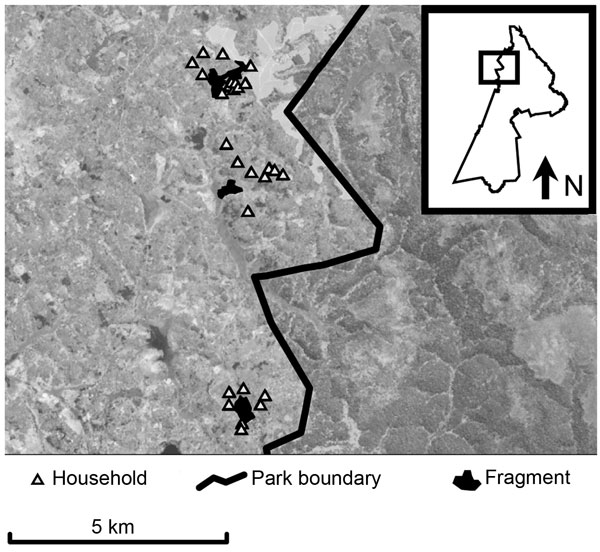Volume 14, Number 9—September 2008
Research
Forest Fragmentation as Cause of Bacterial Transmission among Nonhuman Primates, Humans, and Livestock, Uganda
Figure 1

Figure 1. Map of study area within Kibale National Park, western Uganda (box) and forest fragments and households included in the study. Fragments are (from north to south) Kiko 1, Bugembe, Rurama (see Table 1 for details). Households, park boundary, and fragments are superimposed on a Landsat satellite image (30-m resolution).
Page created: July 13, 2010
Page updated: July 13, 2010
Page reviewed: July 13, 2010
The conclusions, findings, and opinions expressed by authors contributing to this journal do not necessarily reflect the official position of the U.S. Department of Health and Human Services, the Public Health Service, the Centers for Disease Control and Prevention, or the authors' affiliated institutions. Use of trade names is for identification only and does not imply endorsement by any of the groups named above.